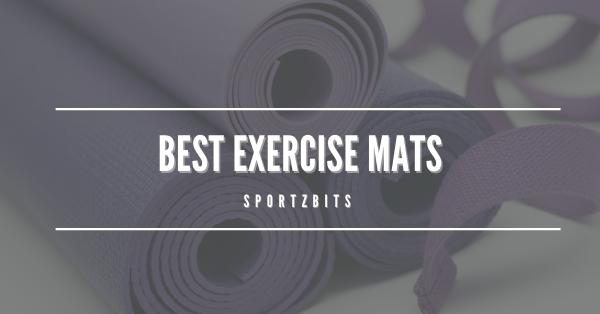Building lean muscle isn’t just about losing weight. It requires dedication to strength training, embracing a nutritious diet, and providing enough time for recuperation. The path towards achieving the best result from your intense work might be long, but it is guaranteed to be gratifying.
Benefits of Gaining Lean Muscle
In the process of building lean muscle, you will discover that you’ll get more than aesthetic physical attributes. Here are additional health advantages you will benefit from building muscle:
- Boost your strength
- Reduce injury risk to ligaments and tendons
- Improve bone density and strength in the long run
- Strengthen core and back muscles to improve posture
- Boost your immune system to fight illness, infection, and even stress
- Slows muscle loss related to aging
- Improves metabolism
- It helps you lose weight

Ways to Build Lean Muscle
Having a lean muscle mass builds up your confidence and improves your health both physically and mentally. Basically, there are three main components to build lean muscle effectively: training, diet, and recovery.
Training Tips
If your goal is to build lean muscle mass, you have to be strategic with the workout routine. Initially, before gaining muscle mass, you have to lose fat first. Cardio exercises are one of the effective ways to burn fat and calories. When you get that sorted out, strategize the exercise movements to target muscle groups you want to work on.
Perform Strength Training
If you invested in a gym membership or a well-equipped home gym, you might as well put it into good use. Maximize what you have by performing two or three strength training exercises per week. You can perform the following ways to help you build muscle.

Add some more weight to your body weight
You can use either a weighted vest or ankle weights to add resistance and build muscle in your target area.

Lift weights
If you are able, perform squats or bench presses with a barbell. If you can’t handle lifting weights yet, you can perform lifting exercises with lighter weights, such as dumbbells. As you progress, add a pound or two to level up.

Take a power yoga class
Power yoga is more dynamic compared to yoga. Its intensity helps in building body strength.

Perform High-Intensity Interval Training (HIIT)
Performing HIIT helps you lose fat, build strength and improve your metabolism.

Perform Compound Exercises
Compound exercises allow several muscles to work together to perform one exercise. Doing this targets different muscles with one movement. It saves you time but provides you with effective results. One of the best compound exercises you can do is burpees. It includes jumping, squatting, push-ups, and core work in one exercise.

Track your Progress
Being aware of your fitness improvement will help you move on to the next challenge that your muscles should take. To gain muscle mass means continuously challenging your body and muscles until you reach your targeted muscle growth. Instead of lifting the same amount of weight and doing the same workout routine for months, consider challenging yourself with additional weights after four weeks and see if you have improved your strength.

Modify your Workout Routine
With proper guidance from your personal trainer or coach, don’t be afraid to modify the movements and the frequency in your training program. This ensures that all muscles or muscle groups in your body get the proper attention they need. Modifications also allow you to either amp up or tone down the exercise program adjusting to your need.
Diet
For some people, it’s easier to burn calories than control their eating habits. But if you want to commit to this business of getting lean muscles, you should have food discipline and follow meal plans. Aside from getting regular workouts at the gym, a healthy diet affects muscle building and lean muscle growth. Here are some tips to improve your diet that will make an impact on your muscles.
Consume Lean Protein
Protein helps in the repair and growth of muscles. But lean protein doesn’t mean all meat. There are other good sources of protein, such as beans, that are also a great source of fiber and vitamin B. You can also try other vegetables that are rich in protein to add to your menu.
Carbohydrates
Carbs have a “bad” reputation for bringing weight gain. It is mostly recommended to be avoided at all times. But that usually applies when you’re trying to lose a lot of weight. In building lean muscles in your body, carbs provide the much-needed energy for you to power through strenuous exercises. If you’re still conscious about your carb intake, you can eat quinoa grains that also have enough protein content.

Mind What You Eat
Yes, you must be conscious about what you put inside your body. Protein is one of the main ingredients in your meals when building muscle mass, but that doesn’t mean that you should eat every protein available. Same with other foods, everything must be consumed in the right amounts to avoid health problems.
Eating Schedule
A strategic meal plan ensures that you don’t get hungry yet get just the right calories your body needs. You can prepare a healthy meal menu per week that you can look forward to, maintaining the target body weight and helping you build lean muscle.
Hydrate
Ensure you drink enough water, especially if you’re sweating a lot due to your cardio workouts.

Recovery
A well-balanced life requires enough rest. Muscle building is not really all work, no play. Your body needs to recuperate to give your muscles time to rebuild. Getting enough sleep also energizes your body to carry out the tasks you have to perform. A stressed and overworked body has a direct effect on your physical composition.
Conclusion
Lean muscle growth relies on three factors: workout, food, and rest. Without these elements, it would be difficult to achieve your fitness goals. It’s also important that you know the correct process and timing of each activity to ensure efficiency.
In training, always include fat-burning workouts and strength exercises. In dieting, consuming protein-rich food and supplement helps in the repair and growth of the muscle tissue. But, you should only take the right amount to avoid health problems in the long run. And finally, allocate time for body rest 1-2 days per week.





